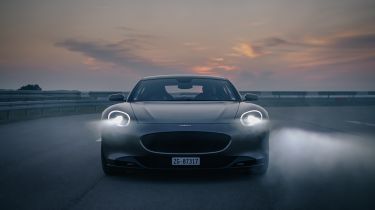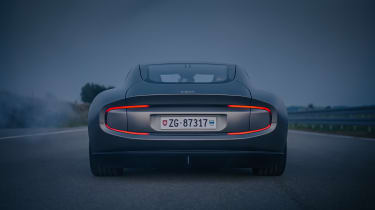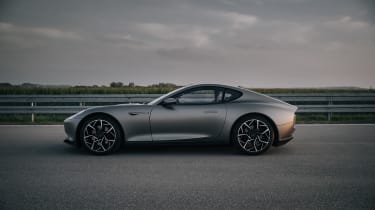New 2024 Piech GT electric coupe enters testing with 311 mile range
The Swiss start-up’s retro-styled GT coupe looks set to achieve a maximum range of 311 miles and a 0–62mph time of less than three seconds
Piech Automotive has delivered a significant update on the Piech GT electric coupe, last seen at the 2019 Geneva Motor Show in prototype form.
The company, founded by Toni Piech - son of the late VW Group boss Ferdinand Piech - looks to sell the all-electric GT before the mid part of the 2020s, and has confirmed that an SUV sibling is also in the early stages of development.
Piech is a little behind schedule (due in part to the coronavirus pandemic), with the GT now due to enter series production in 2024. When it’s finally on the road, it’ll become a rival for the likes of Porsche Taycan and Audi e-tron GT, as well as traditional front-engined sports cars such as the Jaguar F-Type and Nissan GT-R.
The Piech GT’s powertrain comprises a 75kWh battery pack and three electric motors – one mounted on the front axle and two on the rear. The system has a combined output of 603bhp which the firm says is enough for a 0–62mph of less than three seconds. Piech also says the GT will get from 0–124mph in under nine seconds.
Total range is said to be 500km (311 miles), but the charging capability in development for the GT is what stands out. The brand has partnered with electric car charging technology company TGOOD, to produce a dedicated fast-charger for the GT which the company says can achieve the same 80 percent charge level in just five minutes. However, technical details of how this works have not been disclosed.
Charging the Piech GT at a European CCS2 charging station (such as an Ionity 350kW charger) can replenish the battery to 80 per cent in eight minutes.
The company wants the car to handle like a true sports car and, more importantly, be appealing to those buyers who would normally opt for a petrol-powered sports car.
It weighs 1,800kg - about the same as an Aston Martin DBS – and Piech has tried to emulate the handling characteristics of a typical sports car by separating the battery pack in two halves, mounting one in the central tunnel and one at the rear axle.
Coupled with the position of the electric motors, Piech says this layout provides a weight balance “that had previously been the exclusive preserve of pure sports cars with internal combustion engines.” The layout also means the seats can be mounted lower, as there’s no battery under the floor, which benefits the car’s centre of gravity and styling.
Rea Stark Rajcic, co-founder and Chief Design Officer for Piech Automotive, said: “The new Piëch GT should convincingly transport the DNA of a classic sports car into the electric age. We created a sports car with a timeless design, just like we would dream ourselves.
“And we spoke at length with car enthusiasts about what is missing on the market. The result was a modern classic that is not bound by any consumer cycles. Drivers of our sports car should enjoy every moment they spend behind the wheel.”
The Piech GT’s styling hasn’t changed since its concept first appeared at Geneva a few years ago. It retains the traditional “long bonnet, short tail” silhouette, borrowing styling cues from greats such as Aston Martin DB9 and Alfa Romeo 8C.
The company says it looks to follow the same pre-production and manufacturing process used by all the big German manufacturers. That means extreme weather testing and harsh shakedowns on the Nurburgring to make sure all the fixings are up to the job, even in the long run.
Piech Automotive: future vehicles
The two-seat GT won’t be the only car we’ll see from Piech in the coming years, either. The company already has plans for a sporty electric SUV and an electric saloon called the Piech Sportlimousine, both of which will be built on the same modular underpinnings as the GT.
Rajcic outlined his company’s product strategy, saying: “Our modular concept not only gives us freedom in the design to create vehicles that are as attractive as possible, but at the same time serves as a platform for all other body shapes.
“The initial focus is clearly on the two-seater Piëch GT sports car, while the sporty Piëch SUV brings additional volume in sales and the four-seater Piëch Sportlimousine offers more occupant space and round off the product range.”
The platform’s modularity will also allow Piech to upgrade its battery packs and motors as technology advances, which should keep the chassis relevant for as long as possible. Toni Piech, the company’s CEO, also says the platform will allow his firm to “respond flexibly to corresponding developments and breakthroughs in the field of hydrogen or fuel cells.”
Now click here to read about the Aura – a British-built pure-electric roadster for the future…
Find a car with the experts






